



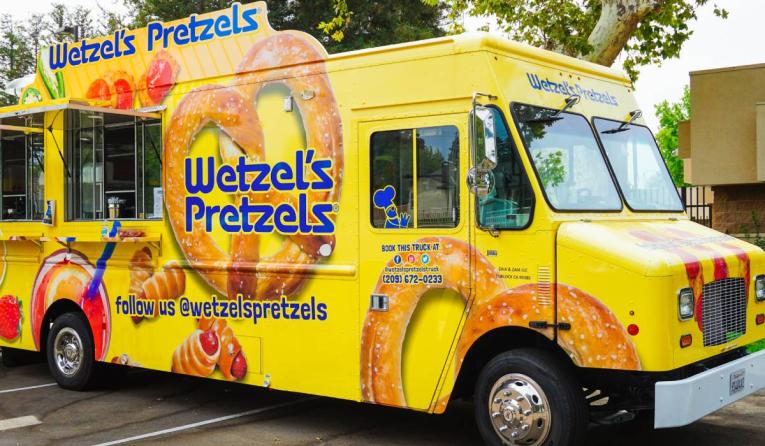


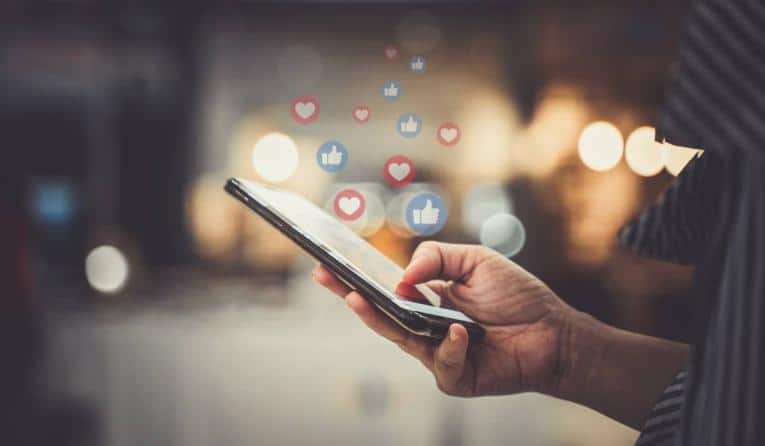

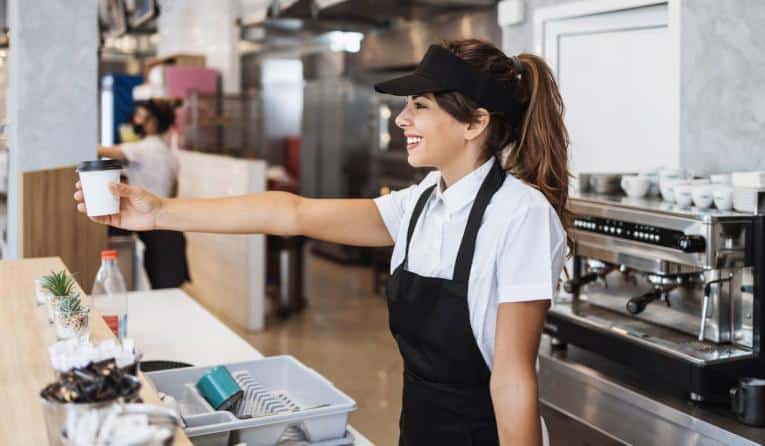
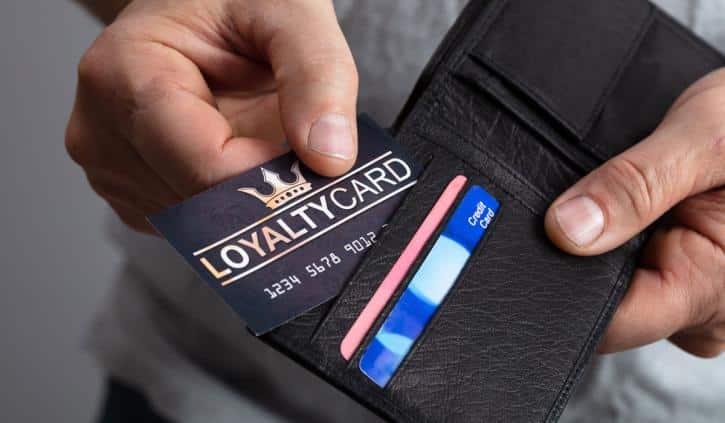





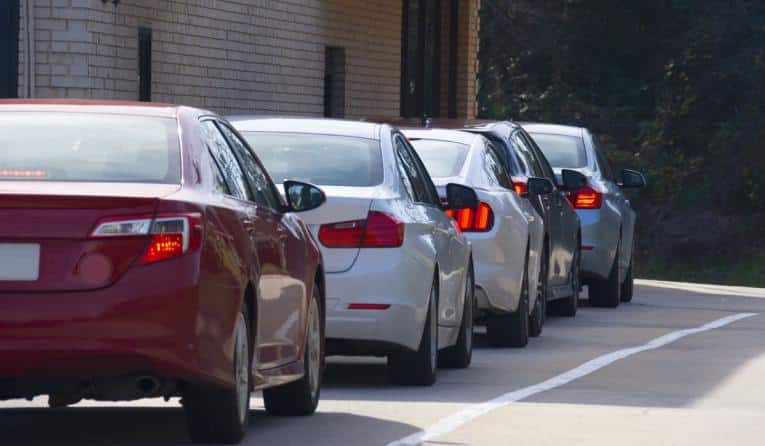

From the source
A few years back, I had just published another yearly “X Fast-Food Trends to Watch for X” when an email pinged. One of the operators I interviewed was curious why I included one part of his insight while leaving out the other (he disagreed with what I spotlighted). I didn’t have a great answer other than that’s what triggered my brain and made it to paper (this was a while ago). But the experience did shift my process. Instead of informing readers “what they need to know,” I started to simply let restaurant minds, from brand execs to suppliers to vendors to partners, tell us what they cared about most at that time. And in that practice, an unfiltered, full list of concerns, opportunities, predictions, and more spilled out.
More 2024 predictions
The Restaurant Lessons We Learned in 2023
What’s the Big Restaurant Tech Trend Nobody is Talking About Yet?
So that’s what follows here. It’s less a top-to-bottom narrative than a primer on what’s stirring the calendars of change-makers sector-wide. Like always in foodservice, finding one lane would be like trying to pick a single ant from the farm. But that’s what makes this industry what it is.
Hoyt Jones
President, Jersey Mike’s Franchise Systems, Inc.
Let’s break it down into a few categories.
Labor
The labor situation is stabilizing. Along with changes in the economy, the work we have done in the field to teach managers and franchisees best practices related to hiring and training has helped attract and retain crew members.
Training has helped our managers become not just better operationally but better people managers which creates a happier environment in the stores.
Showing a clear career path from manager to owner has motivated crew members to grow with our brand.
Supply Chain
Supply chain has stabilized, and we expect the same in 2024.
Food costs are in a good place.
Technology
Artificial Intelligence (AI)
As an industry, we’ll see more reliance on AI to streamline operations including voice AI phone ordering and Labor Scheduling Tools.
Speed of Service
Online ordering is up a tick which we interpret as customers becoming more time conscious, so they are ordering ahead. Our focus needs to be on getting the product ready and right.
There will be continued focus on speed of transactions.
We designed a streamlined Customer Facing Terminal that makes the tap feature more prominent resulting in a significant increase in customers tapping rather than inserting their credit card. This speeds up transaction time because tap is a much faster way of paying. The new system increased tap transactions from 8 to 67 percent, making payment five times faster.
The new, larger terminals also offer greater visibility for customers so that they can easily read their full order which helps with accuracy or respond to a marketing message. For instance, customers may be prompted to become a MyMike’s rewards loyalty club member or see an invitation to participate in a local fundraiser.
Customer Experience
Even as technology provides more options for customers, the personal touch continues to build loyal customers.
Authentic interaction with our customers has been part of the Jersey Mike’s model since Peter Cancro bought his first sub shop at the Jersey Shore when he was 17.
Everyone likes to be recognized. Our customers enjoy the friendly banter in our restaurants. Even if customers have ordered online, they appreciate a nod and smile when they come in to pick up their order.
Bryan Solar
Chief product officer, SpotOn
As we think about the restaurant industry in 2024, we expect restaurants will face increasing economic pressures in the form of higher labor costs, elevated food/input costs, and continued competition from well-capitalized, tech-forward restaurant brands. Operators will need to find new ways to protect and boost their restaurant’s profit margins more now than ever. The independent restaurants must embrace “doing things differently” to thrive in this increasingly competitive landscape. Looking ahead to 2024, we anticipate restaurants will need to:
Meet consumers where they are with multiple ordering formats
Adopt technology that provides actionable insights to move their business forward
Address workforce challenges with technology that enhances the employee experience
Reclaim their guest relationships with direct online ordering and reservation platforms
Leverage AI to do more with less and stay competitive
And here are some other things on my mind:
Omnichannel is no longer a nice to have
We believe that a growing part of a restaurant’s business is the ability to sell its offerings in many ways. Consumers no longer view restaurants only as a full-service dining-out experience but rather as a way to feed themselves in various formats—dine-in, carry-out, order ahead, order delivery, QR at table, kiosk, etc. To ensure restaurants can meet their customers where they are, we will continue our commitment to developing flexible technology, investing heavily in ordering technology so restaurants can take their customer’s orders the way they want to place them. Investments include continuing to evolve our QR order and pay offering, deepening our integration with Order with Google, and finding best-in-class partners to unlock flexibility for our customers. For example, Tony’s Pizza averaged three extra orders per hour when they implemented SpotOn Order and QR Ordering, resulting in a $40,000 increase in monthly sales.
Understanding technology’s value and true cost of ownership
In 2023, food and labor costs continue to rise to record highs, and we don’t foresee these costs coming down in 2024. Restaurants that raised prices in 2022 and 2023 are reaching the threshold of what consumers are willing to accept. In 2024, restaurants must be laser-focused on finding value across their cost and revenue centers and will require technology that creates and identifies opportunities to cut costs or drive revenue. The right restaurant tech stack will help operators increase revenue per shift, adopt menus to optimized p-mixes, and reduce operating costs.
For SpotOn, we are being incredibly intentional about where we invest our R&D to create and preserve excellent value for our clients so it addresses the challenges operators will face in the new year and beyond. This means we’ll focus our innovation on where we can make the most impact and continue to build deep integrations that drive actionable insights for operators, boost revenue, and identify cost-cutting measures for their business. Partnering with Fresh KDS allows us to help SpotOn clients make their kitchens more efficient. At the same time, partnerships with MarginEdge enable our clients to save costs by determining the best pmix for their operation.
Employees and guests demand tech-powered experiences
According to a study by the National Restaurant Association, labor remains the No. 1 challenge across our industry. While some restaurants continue to face shortages and are focused on recruiting talent, others have moved on to focus on retention, improved management, and the employee experience. The pandemic decimated the hospitality workforce; as the industry returns to pre-pandemic labor numbers, we see an influx of new workers, while experienced staff are increasingly rare. We believe this shift will necessitate operators to deploy easy-to-use technology that makes their employees’ jobs easier and improves employee retention. For example, handhelds save servers time and steps, while the teamwork employee app makes shift swaps and viewing pay a breeze. This coming calendar will be a year where great talent will be highly sought after, uncharacteristically challenging to source, and critically important to retain; technology will play a key role in addressing these issues.
Restaurants reclaim their customer relationship
For the past three years, we’ve seen a growing trend of tech providers pushing their brands above their clients’ brands. For example, guests are encouraged to download a tech provider’s app to order takeout or delivery instead of ordering directly through a restaurant’s app or website. By funneling consumers through a commission-free online ordering platform, you can save roughly 30 percent. We believe that a wave of change is coming where restaurants and brands, more broadly, will reclaim their guest relationships and focus on building direct relationships with their customers. How? For quite some time, airlines, hotels, and ecommerce retail customers have benefited from bespoke experiences tailored to their preferences, spending, and loyalty. This level of customization and engagement hasn’t quite arrived in the restaurant space. We believe that the restaurant concepts that figure out how to deliver a deeply personalized customer experience—including status, special access, and unique rewards—will be able to create loyal guests and consistent revenue. SpotOn’s bet: it’s all about your restaurant brand in 2024.
Democratizing AI to level the playing field for independents
Finally, Artificial Intelligence remains a big question mark in the industry. Larger restaurant groups are investing heavily in AI; SpotOn wants to democratize these advancements, ensuring independent operators can leverage and benefit from AI to drive their business forward. We believe that in 2024, the wider industry will begin to point AI and machine learning at critical challenges facing our industry, including menu optimization, staff scheduling, and customer engagement. At SpotOn, we believe independent restaurants operating in this competitive environment must have access to the same advantages AI will bring.
Xavier Casanova
CEO, Presto
Quick-service dining rooms continue to be squeezed in favor of the drive-thru as real estate prices remain elevated and consumers continue to embrace the low-contact conveniences of food ordering that took hold during the pandemic.
AI begins to take hold. Operators seek labor efficiencies while staff members struggle to do more with less. The drive-thru is a natural entry point for voice AI, but vision AI tech will start to gain steam in the drive-thru, in the lobby, and in the kitchen.
Delivery orders take a hit as higher prices hit the consumer’s wallet especially hard while a weakening macroeconomic climate takes hold in 2024. Chains catering to lower-income customers will bear the brunt of the impact.
Vincent Montanelli
CEO, Wetzel’s Pretzels
What big-picture trends or pain points will you see in the restaurant industry in 2024?
We think customers will continue to be sensitive around pricing, and we feel that trading out full meals for snacking will continue to be a trend.
What will diners care about most? Affordability? Ambiance? Culinary excellence? Customer service? And why?
Diners care about affordability and convenience while maintaining great taste. We continue to try to make ordering as easy as possible via the mobile app and delivery platforms and are continually bringing taste innovation with limited-time offers, like S’more Bitz.
Is there anything you believe will make a “comeback” in 2024?
There is always a taste for nostalgia. Wetzel’s will be celebrating 30 years of business in 2024, and we are excited for our first customers from the mall in the mid 1990’s to continue to share their favorite pretzels with the next generation.
Sharat Potharaju
CEO and cofounder, Beaconstac
Nearly 60 percent of adults expect to use their phones to access key restaurant features, including ordering food. In 2024, more quick-service restaurants will adopt QR code ordering to meet those expectations and improve operations. Customers can use their smartphone camera to access a digital menu and order without reviewing physical menus or interacting with employees.
This technology reduces wait times and increases order accuracy, improving the customer experience. As labor shortages continue and customers seek more convenience, QR codes offer an easy way for quick-service restaurants to boost efficiency and keep menus up-to-date without incurring reprinting costs.
Cynthia Sener
President GTM, Chatmeter
The age of automation and reimagining customer service in restaurants is here. From sweetgreen implementing robots to help speed up service to Wendy’s redesigning its restaurants for a more optimized output, the restaurant industry is poised for continued growth and innovation in 2024.
As restaurants embrace technology to reduce costs and increase efficiency, they need to ensure that they are putting an increased focus on interacting with and leveraging real-time customer feedback. AI-powered technology is making it possible for brands to uncover insights from large volumes of structured and unstructured data that represents the voice of the customer. Through this data, brands can access a treasure trove of actionable insights and opportunities to improve the customer experience. What’s more, access to this information makes it easier than ever for large, multi-location brands to monitor local-level performance, address issues earlier, and discover revenue opportunities and best practices that they can replicate across locations.
Without the AI-powered insights, brands will struggle to keep up with their competition. With consumers less loyal than ever (92 percent of consumers don’t consider themselves brand loyal), restaurants can’t afford to not manage their brand image and online reputation.
Jocelyn Taylor
Director of Client Partnerships–Restaurants, VDX.tv
Restaurant spending is back and here to stay, but so is price-conscious spending for consumers. In 2024, we expect consumers to continue shopping around for wallet-friendly dining options, which will make it harder than ever for restaurant brands to retain their current brand loyalists. As a result, there will be an increased need for restaurant brands to leverage their 1p loyalty data to stay connected to their customers across all communication channels. Existing customers will need additional touchpoints from brands to remain loyal, so we expect to see a heavy-up in paid-media targeting against these consumers over efforts to conquest new prospects. From a messaging standpoint, value-driven deals will be paired with an increase of limited-time offers and new menu items to re-excite and re-engage current customers to keep them coming through their doors.
Raju Malhotra
Chief Product & Technology Officer, PAR
Quick-service restaurants will reshape their operations and strategies to prioritize and capitalize on first party customer data. Larger brands will take back control of their customer relationships with direct ordering options to help protect profit margins and enhance customer engagement. Smaller restaurants may need to adjust their prices, but the bottom line is clear: the future of the restaurant industry is data-driven.
Kimberly Gore
National Practice Leader, HUB International’s Hospitality Specialty Practice
Elevated inflation and rising property insurance rates will threaten profitability for the quick-service restaurant industry, and labor shortages will persist. Restaurants focused on risk mitigation—and those willing to consider alternative insurance strategies—will be best positioned to succeed in 2024.
Given the competition for hiring, leveraging analytics to deliver personalized benefits that ultimately create quality employee experiences (QEX) can help quick-service restaurants become more desirable.
Providing benefits that speak to employees requires an in-depth picture of individual needs and wants. For instance, younger employees may not want or need expensive health insurance but would like access to mental health counseling and telehealth. Older workers, meanwhile, may prioritize prescription drug benefits and retirement programs, and yet others may need financial wellness and wealth building education.
Underwriters are scrutinizing properties like never before. From analyzing historical wind and extreme heat patterns to evaluating brush exposure, owner/operators will need strong risk management programs if they hope to get a favorable insurance renewal in 2024.
As a result, restaurants will need to ensure facilities are maintained and exceed safety standards. These actions include upgrading windows and roofs, and adding weather and disaster modeling, which will make facilities less vulnerable to wildfires and storms and may reap rewards at renewal.
While some mitigation techniques like using geospatial intelligence to predict earthquake, wildfire or flood vulnerability may seem prohibitively expensive, even adding simple measures like water monitors—which insurers often distribute for free—will make properties a more attractive risk.
Kristin Lynch
Senior Director, Paytronix
At Paytronix, we expect 2024 to be all about the rise of Artificial Intelligence and how the technology will require quality data to truly transform the guest experience. Paytronix will be working hand-in-hand with client brands to help both marketing and IT teams capture and analyze more data with the goal of better understanding guest preferences, making informed high-level decisions, and, ultimately offering a more personalized guest experience.
With Paytronix, sophisticated brands are already segmenting audiences and creating targeted offers, based on specific behavior patterns, all driven by AI and machine learning. Rather than trying to appeal to the biggest possible market, these brands are creating targeted programs designed to reward or encourage specific behaviors. These offers are far more cost effective and add greatly to the brand’s revenue.
For instance, a guest who has purchased a meat-lover’s sandwich will see that image in their communications, while a vegetarian shopper will see a veggie sandwich instead. Then, when the brand rolls out a new sandwich that appeals to the meat lover’s segment, the promotion goes to those who are more likely to enjoy it.
Beyond the broader rise of AI is the fact that generative AI tools like ChatGPT are completely transforming businesses. At Paytronix, we’ve embedded ChatGPT into the feedback component of our Online Ordering offering. By creating prompts based on the guest’s experience, ChatGPT generates a personalized, on-brand message that store operations managers can quickly review and send. In the months to come, this technology will continue to advance, and the process of reviewing and responding to guest issues will move further along the automation curve. The responses will get better and the process of sending them will get even faster. This has a great effect on customer lifetime value. Guests who receive a prompt response are more likely to return and become loyal for the long-term.
Looking forward, Paytronix is exploring additional ways to add value through generative AI tools. For instance, it can be applied to language translation to instantly make a store’s menu available in a multitude of languages, or to generate copy for menu item descriptions. In addition to generating responses and content, generative AI can also summarize and categorize raw information, like guest commentary. By adding TL;DR (Too Long; Didn’t Read) into the prompt, ChatGPT can generate a synopsis of a month’s worth of guest feedback in seconds, providing an actionable summary to store management.
Regardless of the way any team approaches AI, the key is to make humans better at their jobs, not replace them. AI can give an employee a superpower, which can be used to drive their business towards appropriate, scenario-specific automation. But we also know that beyond 2024 AI will become a part of nearly every digital tool on the market, so learning how to use it today can propel people into the future.
Jeff Michaels
VP of Marketing, Mobivity
The landscape of restaurant loyalty programs is confronting a pivotal shift. Under the dual pressures of increased data privacy concerns and economic challenges, there’s a growing need to realign loyalty strategies to accommodate evolving consumer expectations and engagement.
The crux of the issue lies in a fundamental disconnect between consumer and marketer perspectives—consumers assert that loyalty programs should demonstrate the brand’s loyalty to them, while marketers believe these programs should reflect the consumer’s loyalty to the brand. This misalignment diminishes the effectiveness of loyalty programs and leads to lower engagement rates. Despite successfully enrolling members, the bigger challenge remains in fostering consistent engagement.
With the revelation that mobile gaming outranks social media and texting in popularity, there’s an untapped reservoir of engagement potential for quick-service brands in mobile gaming. Integrating brand offers into mobile games has shown a substantial impact in building brand loyalty and customer engagement. One leading quick-service brand used a mobile game to offer a free menu item, redeemable exclusively through their app, which led to a fourfold member increase in 30 days. Another brand employed a similar strategy to re-engage inactive customers, who drove 54 percent of total redemptions.
There is immense potential in aligning loyalty programs with consumer behavior trends and connecting loyalty rewards to mobile gaming could be the key to unlocking sustained growth in 2024 and beyond.
Marlon Koch
VP of Product, MENU & PAR Platform
We anticipate a significant uptick in AI-powered voice and chat ordering in the coming years. Advanced language models make it easier for computers to understand and process customer orders, creating more efficient and convenient dining experiences. For example, Domino’s customers can already order pizza using their voice through Amazon Alexa, Google Assistant or Apple Siri. Starbucks customers can also order and pay using voice commands on the Starbucks app.
While these are just a few early examples, we’re only scratching the surface of what AI-powered voice and chat ordering technology has to offer the restaurant industry. Innovations expected to transform the field include conversational AI for more natural interactions, personalized recommendations based on customer preferences and seamless integration with other restaurant systems for operational efficiency.
Jaime Bettencourt
SVP of Revenue Growth & Brand Strategy, Mood Media
As we journey into the future of the restaurant industry, quick-service restaurant dining spaces are shrinking to align with the rising demand for swift, transactional experiences. The surging popularity of drive-thru and fast-casual dining is fueling the shift toward more compact formats, directly responding to consumers’ cravings for convenient, expedited and tailored culinary adventures. The simultaneous adoption in quick-service restaurant digital signage and QR code integration reflects the industry’s growing emphasis on adaptable, technology-infused dining environments, aligning with the needs of today’s diners.
Shannon Chirone
SVP of Marketing, HungerRush
High customer expectations for stellar experiences
Fast-casual restaurants will face an uphill battle when it comes to standing out in the 2024 landscape of restaurant discovery. Consumers are unforgiving when it comes to the customer experience, especially during a time when wallets are tightening, and restaurant options are plentiful. In 2024 it will be table stakes for restaurant operators to provide stellar experiences, from discoverability on aggregator apps (e.g., DoorDash, Google Maps, Grubhub) to seamless online ordering processes to frictionless checkout via digital options. Restaurants have gotten savvier across the board, but in 2024 the bar will be even higher for a brand to secure loyalty and repeat orders.
A new age for loyalty programs
Loyalty programs are currently in the dark ages. Brands are trying to make customers adhere to the tech that they’ve built or rolled out when the right strategy is to have loyalty programs be driven by what the customers want. e.g., do my customers like tiered rewards in an app? Or is a simple punch card enough to drive repeat visits? Taking this one step further, we’ll see more and more restaurants getting creative with personalized loyalty/reward offers that resonate with customers and align with ordering habits. For example, something that more brands could explore is tracking loyalty/rewards by household, and not just individual customers. This could be a winning strategy, particularly for pizza restaurants, and work seamlessly with how consumers are already ordering pizzas as family units.
Matt Elders
EVP, Revenue, Cordial
Quick-service restaurant establishments live and die by the success of repeat customers, so a quality loyalty program is essential to their growth. Despite the need, restaurant loyalty programs are often rated the lowest when compared to other industries such as hospitality, grocery, or airlines. In the year ahead, quick-service leaders need to focus on implementing generative, descriptive, and prescriptive AI tools that can automate workflows, deeply personalize outreach, and even make recommendations about rewards and incentives best targeted to each customer. While AI no doubt helped with tracking stock, creating staff schedules, and streamlining managerial tasks, the next step to realize its potential will be leveraging AI for customer growth and retention.”
Dean Drako
CEO, Eagle Eye Networks
License Plate Recognition is already playing a vital role in business security infrastructure. In 2024, the role of LPR will expand to helping businesses with ease of operations, especially for drive-thrus.
Currently, LPR is used to improve safety at drive-thrus by monitoring license plates and reporting incident disputes in case of investigations. In the next year, this role will also include helping them with order management during peak times. Using LPR, restaurant staff can link an order to a customer’s car and use it as an identification to deliver their order once ready.
Further, it has the potential to help customers place their orders where the menu can display past preferences and also upsell based on the available data. The data collected will help create future strategies to identify customer preferences influencing a company’s sales and marketing strategies. This will be done optionally depending on the customer’s preference to opt in or opt-out of data collection.
Kevin Jaskolka
VP Marketing, ItsaCheckmate
What big-picture trends do you think we’ll see in the restaurant industry in 2024?
Digital-first mindset: Online ordering accounting for 50 percent-plus of a restaurant’s business.
AI starts adding operations value: AI is still in the early days, but we are already seeing solid applications in restaurants, specifically in the drive-thru. This use case will accelerate in 2024.
Personalization: Continued emphasis on not just gathering customer data but acting on it in targeted ways to create unique experiences and offers driven by 1:1 marketing efforts.
Continued emphasis on value: Not necessarily the lowest cost, but what am I getting for the same dollar amount?
Return to office: More companies are moving back to hybrid or 100 percent in-person models that will support concepts that rely on lunch traffic. This will be a catalyst for catering as well.
Urban to suburban: Post-COVID relocation pushed more people to smaller cities or suburbs. Brands will follow and open locations in less populated areas to meet that demand.
Environmental impact: Sustainability and food waste concerns influence customer choice. There is a growing focus on regenerative agriculture and sustainable packaging.
Experiences: “Eatertainment” (eg: Dave & Buster’s, TopGolf, etc.) continues to do well with a 25-30% increase in foot traffic.
Daypart shift: 6 pm is the new 8 pm. Dinner hours shifting to earlier times opens more opportunities for late-night business at 10 pm and later. Brands like Taco Bell and Denny’s are already adjusting for this.









